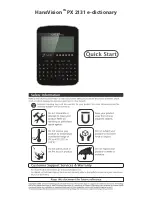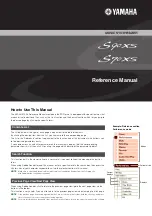
12 - 40
iCAT
MU-iCAT-1120
WARNING:
- Particular attention should be paid to the state of the flexible hoses or of the other parts subject to wear.
- It must also be checked that there are no leaks of oil, mixture or of other dangerous substances.
If such situations occur, the operator must not restart the atomizer before the issue is resolved.
If these facts are observed at the end of the spraying, the operator, before leaving, must affix on the atomizer
a sign indicating that maintenance work is necessary and it is forbidden to use it.
- Do not put your hands or introduce screwdrivers, wrenches or other tools into the moving parts.
- It is forbidden to use flammable fluids for cleaning.
- Periodically check the condition of the stickers and restore them if necessary.
- Operators must avoid carrying out unsafe operations in uncomfortable positions that may compromise their
balance.
- Operators must pay attention to the risks of entrapment and entanglement of clothes and/or of hair in moving
parts. We recommend the use of caps to contain long hair.
- The use of chains, bracelets and rings can also pose a risk.
- The workplace must be adequately illuminated for the required operations. Insufficient or excessive lighting
can cause risks.
- The instructions, accident-prevention regulations and warnings contained in this Manual must always be
respected.
- The machine may be subject to the national requirements (of the country in which it is being used) with regard
to regular checks by the designated bodies.
2.5
ACCIDENT PREVENTION SAFETY
WARNING:
- Never pass in front of the cannon in motion.
- Completely stop the engine and wait for the machine to cool down completely before performing any filling,
adjustment or maintenance operation.
- Do not tamper with or modify the protective grilles.
- During work breaks with the cannon running, never stop nearby.
- Never put your fingers or objects through the grilles. This can cause serious injury.
- DO NOT operate on the nozzles with the pump running.
- NEVER blow the nozzles to unblock them.
- NEVER exceed the working pressures indicated in this Manual.
- NEVER fill the Tank of the machine beyond the rated capacity of the machine, and absolutely avoid leakage of
liquid or foam from the hatch.
- NEVER apply spraying in windy conditions! In case of even moderate winds, reduce the Volume per hectare to
reduce the overhead drift.
- DO NOT apply spraying in proximity of streams or ponds or other sources of public water or in conditions that
can cause contamination.
- NEVER enter the Tank or introduce your face into it!
- DO NOT smoke during the preparation and work stages.
- DO NOT eat during the preparation and work stages.
- DO NOT discharge the pesticide residues on the ground, in ditches or waterways.
- Leave or dispose of the empty containers of Pesticides only after thoroughly washing and decontaminating them.
- Touch the constituent parts of the circuit of the "Electrostatics" device (if present) only after being certain of
having turned off the system.
- Keep your hands, feet and clothing away from any moving part of the machine.
- In the event of an accident, immediately stop the atomizer and consult a doctor or call for emergency assistance.
2.6
SAFETY WARNINGS
WARNING:
- Keep children, adults and animals away from the areas being treated.
- Make sure that all guards are in place and are in a perfect condition.
- Remove (temporarily) the guards only if specifically required by the instructions of this Manual.
- Make sure that the machine is mounted correctly on a means of transport and that it is tightly restrained.
- Keep the machine clean and free it immediately from any accumulation of dirt, mud and debris.
- Stop the engine before refills and/or checks.
- Beware of any sharp parts or ends also due to galvanisation residues.
- Cautiously inspect all the galvanized parts of the machine before starting work and remove any offensive
points not detected during assembly checks.
- Always keep a fire extinguisher to hand. Check that it is always in good working condition.
- Use of closed-cab vehicles is preferred.
- Do not use open-cab vehicles without the use of personal protection against contamination by mixtures
(helmet, sealed overalls, etc.) according to the safety standards applicable in your country.













































